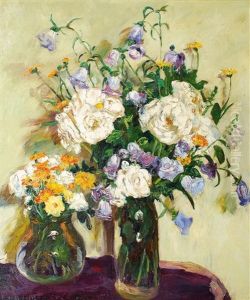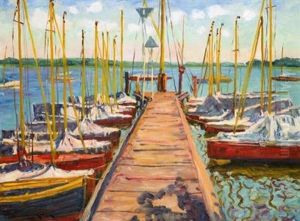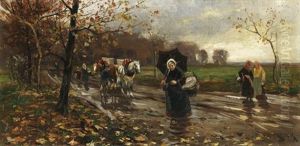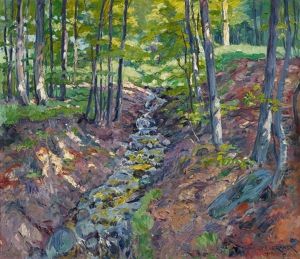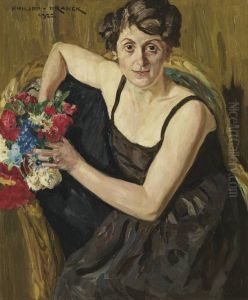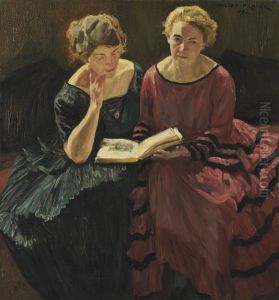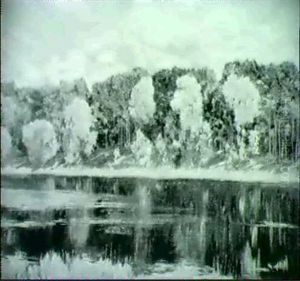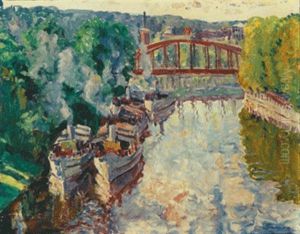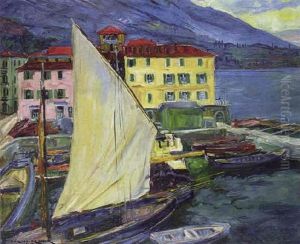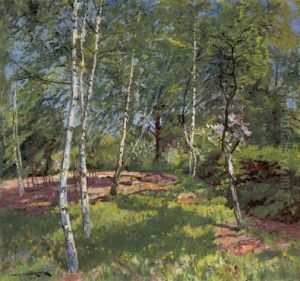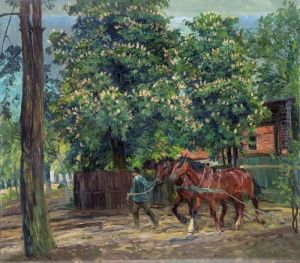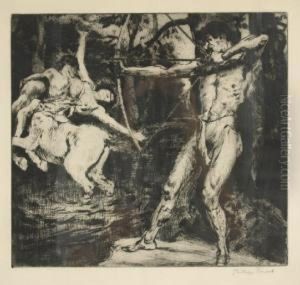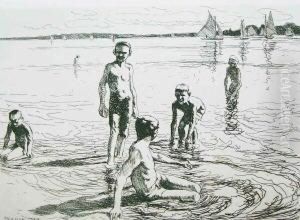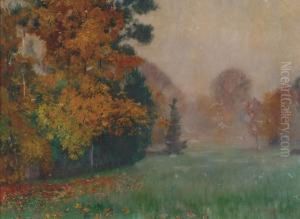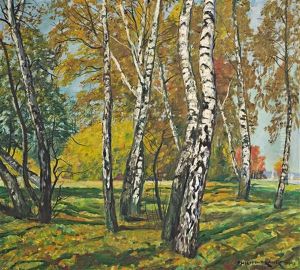Philipp Franck Paintings
Philipp Franck was a German painter associated with the Berlin Secession movement and known for his impressionist landscapes, portraits, and still lifes. Born on April 9, 1860, in Frankfurt am Main, Germany, Franck demonstrated an early affinity for art, which led to his formal education in the field. He studied at the Städelsches Kunstinstitut in Frankfurt before moving to Munich to further his training at the Academy of Fine Arts.
Franck's style was heavily influenced by the French Impressionists, and he was particularly inspired by the works of Claude Monet. He sought to capture the transient effects of light and color in his paintings, often working en plein air to directly engage with the landscape. His work was characterized by a vibrant palette and loose brushwork, which gave his paintings a sense of immediacy and liveliness.
In 1895, Franck moved to Berlin, where he became an active member of the Berlin Secession, a group of artists who sought to break away from the traditional academic art institutions. The Secession provided a platform for Franck and his contemporaries to exhibit their works, which were often met with both acclaim and controversy. The Berlin Secession was an important movement in the development of modern art in Germany, promoting new ideas and fostering a sense of community among progressive artists.
Throughout his career, Franck exhibited his work widely and received numerous awards. He also took on teaching positions, sharing his knowledge and techniques with younger artists. Franck continued to paint well into his later years, maintaining a prolific output and staying true to his impressionist roots.
Philipp Franck passed away on August 11, 1944, in Berlin. His legacy is preserved through his artworks, which are held in collections both in Germany and internationally. Franck's contribution to the Berlin Secession and his role in the dissemination of impressionist ideas in Germany make him a significant figure in the history of early 20th-century German art.
